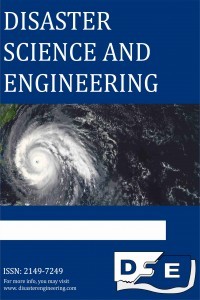Landslide Occurrences in The Hilly Areas of Rwanda, Their Causes and Protection Measures
Landslide Occurrences in The Hilly Areas of Rwanda, Their Causes and Protection Measures
Rwanda being a small country in central Africa, it is not well known for landslides, but recently especially in the years with above normal rainfall and with high increase in population per kilometer square the loss of life and property from landslides and mud flows is increasing. This research assesses the factors that influence landslide occurrences in Rwanda, their impacts on the livelihood of the people, their causes and protection measures. For almost 10 years from 2000, heavy rains and landslides left 108 people dead and ten thousand displaced and landless mostly in North and Western provinces. The volume of debris from landslides was 110 million m3 in and this was deposited into rivers and streams or in transportation roads. Twenty nine of these landslides dammed rivers resulting in high losses of fertile soils and infection of fresh waters with used chemicals in cultivating those lands. The main landslide types are debris flows which occur on concave slopes where water concentrates and with the layer of clay downward water pushes the land to slides laterally. These landslides occur on steep slopes that are concave and between slope angles of 140 to 550. Slopes facing north-west and West are most prone to landslides which coincide with the dominant rainfall in the areas. The soil types in this area are those conditioned by topography and tropical climate namely Nitisols, Ferralsols, Leptosols, Gleysols, and Acrisols. The soils contain medium to high plasticity clays and according to the Atterberg limits they approximately fall in the categories of kaolinite. The top soils also have a high infiltration rate which allows fast flow of water into the deeper clay rich horizons promoting water stagnation causing slope failure. The main triggering factor is rainfall and rainfall events of low intensity but prolonged for days are thought to be more disastrous however, this is an area that needs further investigation. İn order to reduce the occurrences of landslides terraces have started being constructed by the government and local people and afforestation is being promoted everywhere with the theme ‘’cut one tree plant three’’ in order to fight against landslides disasters with the construction of slope retaining walls, but still not yet a zoning map hasn’t being done, it is of high need to implement a map of zones vulnerable to landslides in the whole country so that people will be able to avoid those places in their daily works.
Keywords:
Landslides, Slope, Convex, Concave, Cohesion Atterberg limits, Rainfall,
___
- Ayalew, L., 1999. The effect of seasonal rainfall on landslides in the highlands of Rwanda. Bull. Eng. Geol. Env. 58: p. 9-19. Atterberg, A.M., 1846-1916. Geotechnique, 3(1), pp. 17 19
- Yayın Aralığı: Yılda 2 Sayı
- Başlangıç: 2015
- Yayıncı: Emrah DOĞAN
